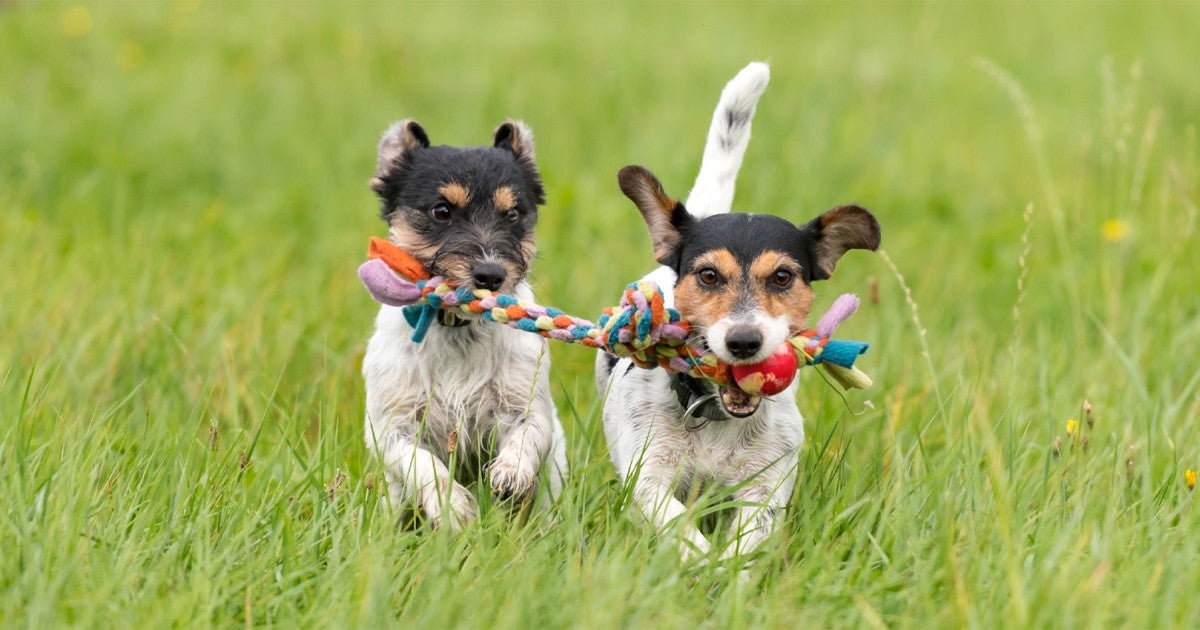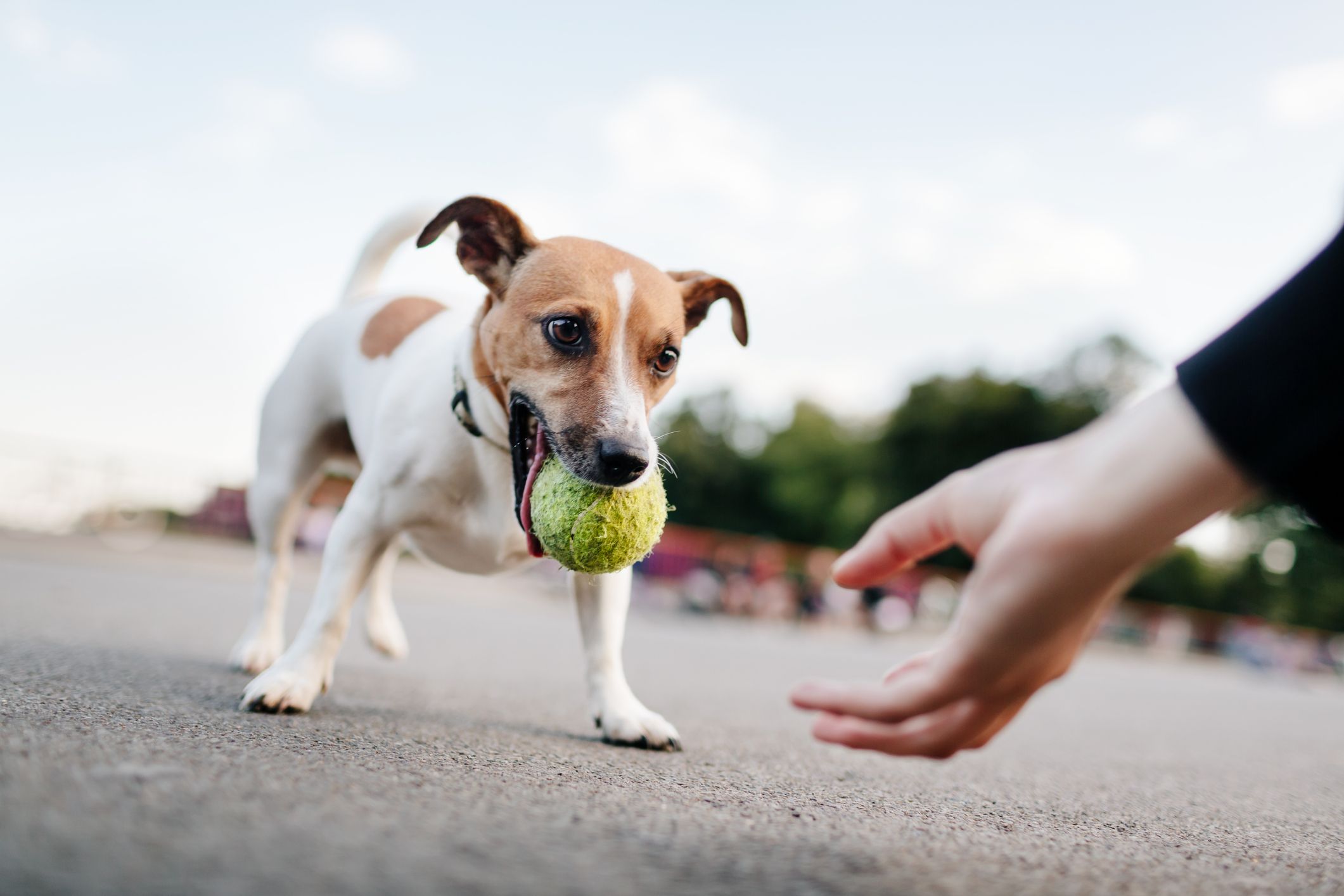Want to revolutionize your dog training journey while having fun along the way? Game-based training is the answer, transforming traditional methods into engaging experiences that both you and your furry friend will love. Studies show that dogs learn best when training feels like play, making serious games an incredibly effective teaching tool. By incorporating these 8 proven techniques, you’ll tap into your dog’s natural intelligence and desire to interact. Whether you’re dealing with a playful puppy or a seasoned senior, these training games will: • Strengthen your bond through positive interactions • Enhance learning retention through enjoyment • Boost your dog’s cognitive abilities • Make training sessions something you both look forward to Ready to turn those challenging training sessions into tail-wagging adventures? Let’s explore these game-changing techniques that are transforming the way we train our four-legged companions.

Game 1: Advanced Focus Training
Advanced focus training is a sophisticated brain game that builds upon basic attention exercises, taking your dog’s concentration skills to new heights. This training method combines mental stimulation with physical activity, making it both challenging and engaging for your furry friend.
Step-by-Step Implementation
Start by positioning yourself in front of your dog in a quiet area. Begin with a clear hand signal – hold your palm facing upward at chest level. When your dog makes eye contact, mark the behavior with a clicker or verbal cue, then reward them.
Gradually increase the duration of eye contact required before marking and rewarding. Once your dog masters this, introduce the double touch command. This involves teaching your dog to touch your hand twice in succession while maintaining focus.
To progress further, add distractions in controlled increments. Start with mild distractions like dropping a toy nearby, then advance to more challenging scenarios such as having family members walk past. Remember to reward your dog generously for maintaining focus despite these distractions.
Practice this exercise in different locations and environments to help your dog generalize the behavior. Keep training sessions short, around 5-10 minutes, to maintain your dog’s enthusiasm and prevent mental fatigue.
Game 2: Interactive Problem-Solving Challenges
Training your dog through interactive problem-solving challenges creates plenty of fun brain game opportunities while developing their cognitive abilities. These challenges encourage your furry friend to think critically and find solutions independently, making training sessions both engaging and rewarding.
Progressive Difficulty Levels
Start with simple puzzles and gradually increase complexity as your dog masters each level. Begin with basic treat-finding games under cups or behind obstacles. As your pup shows advanced behavior understanding, introduce more dynamic scenario challenges like multi-step puzzles or interactive toys that require specific actions to release treats.
Create varying difficulty levels by:
– Using different types of puzzle toys
– Changing hiding spots and patterns
– Increasing the number of steps needed to solve
– Adding time constraints or distractions
– Combining multiple challenges together
Remember to celebrate small victories and maintain patience throughout the process. This progressive approach helps build your dog’s confidence while preventing frustration. Always ensure the challenges remain enjoyable and within your dog’s current capabilities.
Game 3: Environmental Exploration Training
Environmental exploration training transforms routine walks into exciting learning adventures. This game encourages your dog to develop confidence while exploring new walking environments, making every outing a valuable training opportunity. By incorporating structured exploration into your walks, you help your dog build real-life training skills that are essential for their development.
Safety Guidelines
Before embarking on environmental exploration training, establish clear safety protocols. Always keep your dog on a secure leash when exploring unfamiliar territories. Choose areas that are free from potential hazards like broken glass, toxic plants, or aggressive animals. Start with quieter locations and gradually progress to more challenging environments as your dog gains confidence.
Maintain a comfortable distance from potential triggers like traffic, other dogs, or loud noises. Watch your dog’s body language for signs of stress or anxiety. If they appear uncomfortable, move to a calmer area and let them adjust at their own pace.
Remember to bring water, treats, and waste bags for these extended training sessions. Consider the weather conditions and time of day to ensure optimal comfort for both you and your dog. Early morning or evening hours often provide quieter, more controlled environments for training.
Game 4: Advanced Trick Training Games
Elevate your dog’s training experience with advanced trick training that combines mental stimulation with physical activity. This delightful game challenges your furry friend while strengthening your bond through engaging exercises.
Progression Techniques
Start with simple tricks your dog already knows and gradually increase the complexity. For example, if your pup has mastered ‘sit,’ teach them to ‘sit pretty’ by raising their front paws. The rules of play are straightforward – always begin with familiar commands before introducing new elements.
Break down complex tricks into smaller, manageable steps. If teaching your dog to weave between your legs, start by luring them through one leg, then progress to multiple steps. Reward each successful attempt to maintain enthusiasm and build confidence.
Incorporate different positions and distances to make trick training more challenging. Practice commands from various angles and gradually increase the distance between you and your dog. This helps them understand and respond to cues regardless of your position.
Use positive reinforcement consistently throughout the training session. Mix high-value treats with verbal praise and physical affection to keep your dog motivated. Remember to keep sessions short and fun, ending on a positive note before your dog loses interest.

Game 5: Professional Training Scenarios
Professional training scenarios take your dog’s learning to the next level by simulating real-world situations in a controlled environment. This advanced game helps prepare your pup for various encounters they might face in daily life while building their confidence and obedience skills.
Working with a certified dog trainer or behavior consultant can help you create realistic training scenarios tailored to your dog’s needs. These scenarios might include meeting strangers, encountering other dogs, or navigating busy streets – all in a safe, structured setting.
Expert Tips
Start with basic scenarios and gradually increase complexity as your dog progresses. For instance, begin with simple greetings before moving on to more challenging situations like passing by a crowded kennel club event.
Break down each scenario into smaller, manageable steps:
– Set up the training environment to mimic real situations
– Use volunteer helpers to act as distractions
– Reward your dog for maintaining focus and following commands
– Practice regularly to build confidence
– Gradually increase environmental challenges
Remember to keep training sessions positive and end on a successful note. If your dog shows signs of stress, scale back the difficulty and work at their pace.
Games 6-8: Advanced Training Techniques
Implementation Strategies
Elevate your dog’s serious training to new heights with these advanced techniques that create an enriching educational experience for both you and your furry friend.
The Shell Game challenges your dog’s problem-solving abilities and scent work skills. Place a treat under one of three cups, let your dog watch you shuffle them, and encourage them to find the hidden reward. This game sharpens focus and builds confidence through positive reinforcement.
Hide and Seek takes your learning experience beyond basic commands. Start by asking your dog to stay, then hide in another room. Call their name and reward them when they find you. This game strengthens recall while making training fun and engaging.
The Name Game helps dogs associate objects with specific words. Begin with two toys, clearly naming each one as you present it. Ask your dog to fetch a specific toy by name, rewarding correct choices. This mental exercise enhances vocabulary comprehension and object recognition.
To maximize these advanced techniques:
– Start with short training sessions
– Gradually increase difficulty levels
– Always maintain a positive atmosphere
– Use high-value treats for motivation
– Be consistent with commands and rewards
Remember to celebrate small victories and keep sessions enjoyable. These games transform routine training into an exciting adventure that strengthens your bond while developing advanced skills.

